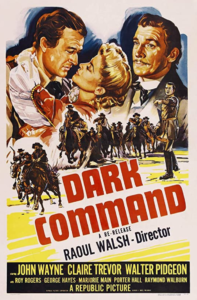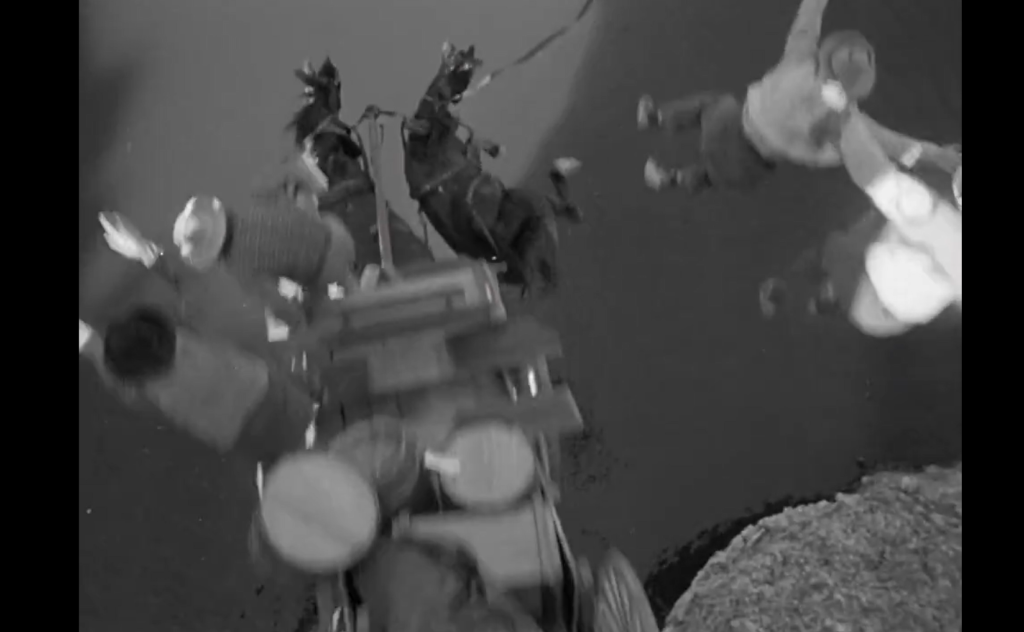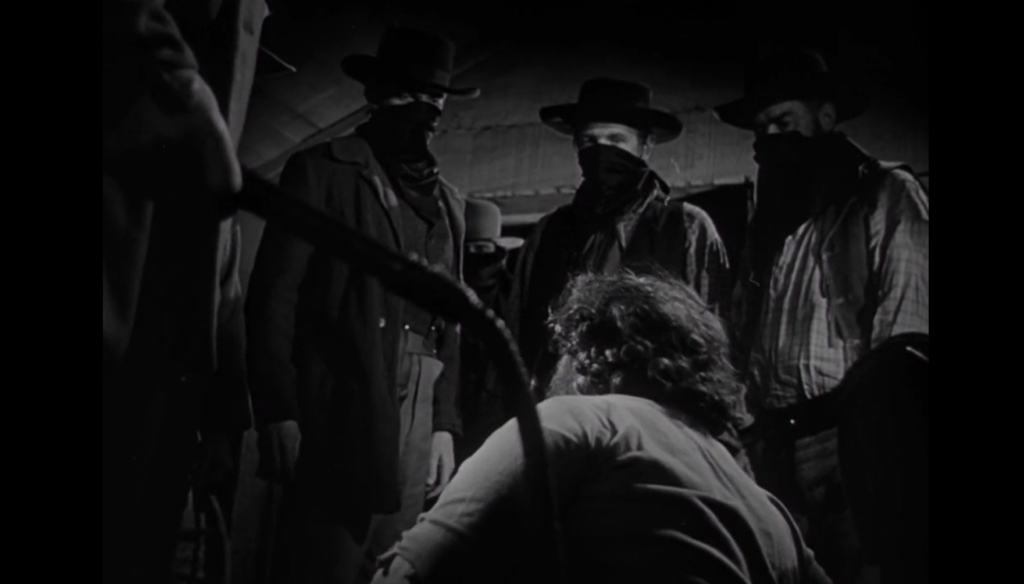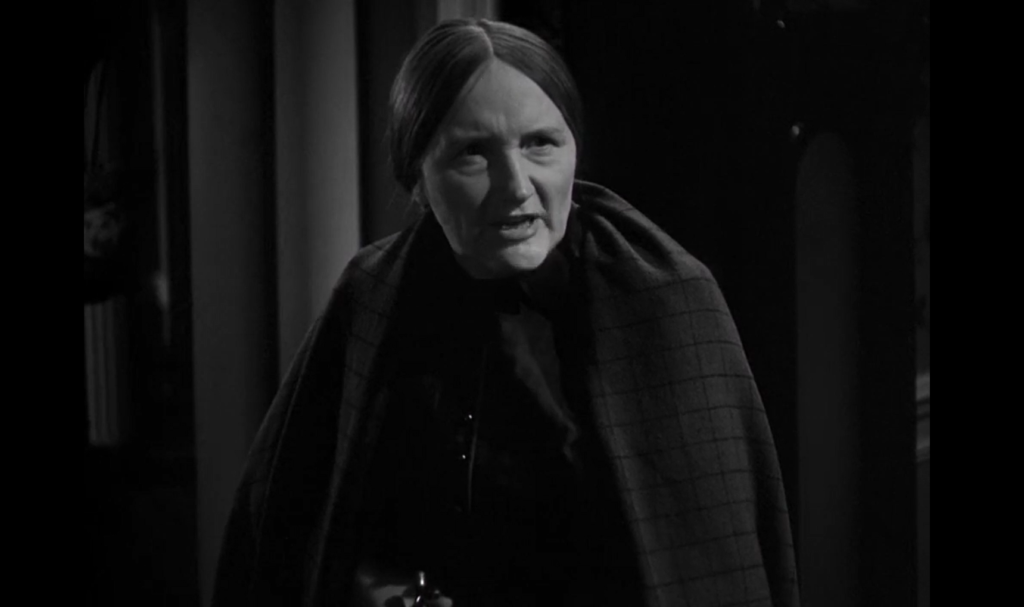“I don’t know much about the law; ain’t had much book learning. But the good Lord gave me a nose for smelling a horse thief a mile off — and what you need in these parts is a marshal that’s better at smelling than spelling.”
|

Synopsis:
When a Texas cowhand (John Wayne) rides into Kansas with his business partner (Gabby Hayes), he falls instantly in love with a beautiful blonde (Claire Trevor) whose brother (Roy Rogers) is a wannabe cowboy and whose father (Porter Hall) runs the local bank — but soon he is competing with the town’s schoolteacher (Walter Pidgeon) for both Trevor’s love and a job as the town’s marshal.
|
|
Genres, Themes, Actors, and Directors:
- Claire Trevor Films
- John Wayne Films
- Love Triangle
- Raoul Walsh Films
- Sheriffs and Marshalls
- Walter Pidgeon Films
- Westerns
Review:
Ten years after giving John Wayne his first leading role in The Big Trail (1930), Raoul Walsh once again paired with Wayne for this western loosely based on Quantrill’s Raiders, a pro-Confederate group of guerrilla fighters. Unfortunately, the character arcs presented here — Wayne’s transition from an illiterate strongman who intentionally punches out men’s teeth in order to garner business for his “dentist” partner, and Pidgeon’s transition from a strait-laced schoolteacher to a marauding villain — are too far-fetched to believe, and Trevor’s character is given little to do other than waver between both her would-be beaus. The most notable performance is by Marjorie Main as Pidgeon’s no-nonsense mother, who is for some reason posing undercover as his maid; it’s odd to see her in a completely non-comedic role. Also of note is a graphic sequence involving a wagon with horses tumbling into a river:

As described in TCM’s article:
Easily the most unforgettable moment in Dark Command is an amazing stunt orchestrated by Yakima Canutt. Canutt and several other stunt men slid down a chute into a river forty feet below…along with a wagon and an entire team of horses. It’s an indelible sight for a number of reasons, not the least of which being that the horses were put in great danger for the sake of a piece of celluloid. This stunt, and several others that ended up killing animals in The Charge of the Light Brigade (1936), alerted the ASPCA that major changes needed to take place in the handling of animals while filming motion pictures. Today, any picture that includes animals has an ASPCA member on hand to keep the filmmakers in line.
Redeeming Qualities and Moments:
- Fine cinematography

- Marjorie Main as Mrs. Adams

Must See?
No; this one isn’t must-see. Listed as a Personal Recommendation in the back of Peary’s book.
Links:
|




One thought on “Dark Command (1940)”
First viewing. Not must-see – but fans of westerns will find it solid-enough and probably to their liking.
Director Walsh keeps things moving quickly but the script is so packed that it seems to do a lot of the work for him. There’s plenty of complication – leaning toward contrivance but, all told, it all serves dramatically (~ though, yes, viewers may now and then start to think that certain developments are far-fetched; certainly occasionally rushed).
As mentioned, a sidebar selling point is the film’s spotlight on Pidgeon’s character – based on the Confederate guerrilla leader William Quantrill. That’s a chapter of history I’ve not seen brought out in another film of this type.
I am in particular agreement re: Ms. Main. She’s a standout here and her performance is a welcome glimpse at her range.